Sleeping Beauty
Aleksandr Tyshler
1918
Image
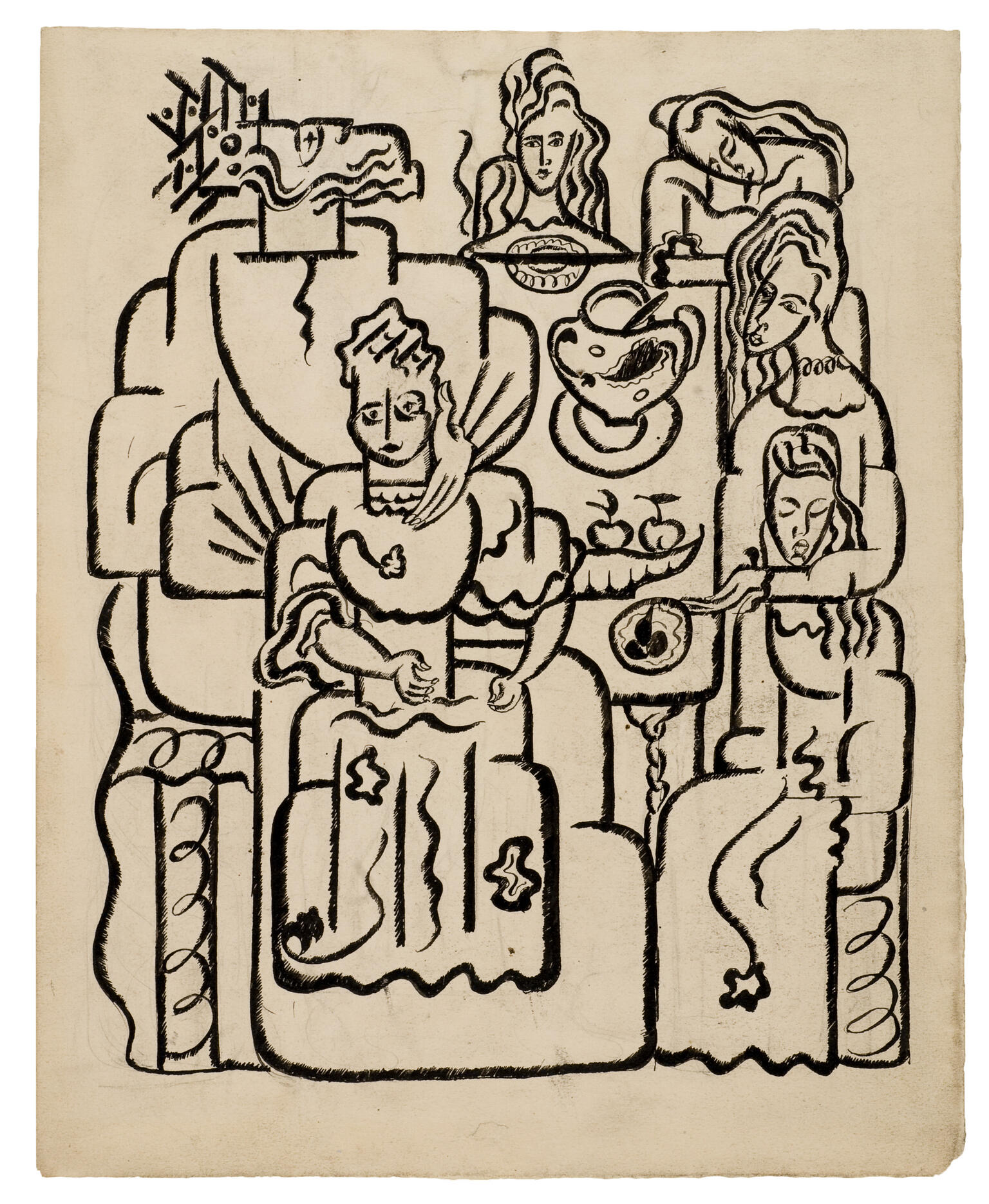
Engage with this Source
Creator Bio
Aleksandr Tyshler
1898–1980
Born in Melitopol, Ukraine, the son of a carpenter, the artist Aleksandr Tyshler studied in Kiev and, after serving in a propaganda unit of the Red Army, continued his education in Moscow. He worked in various mediums: painting, sculpture, graphic design, and theatrical design. Beginning in the late 1920s and continuing through the 1940s, he designed sets for both the Yiddish- and Russian-language theaters.
You may also like
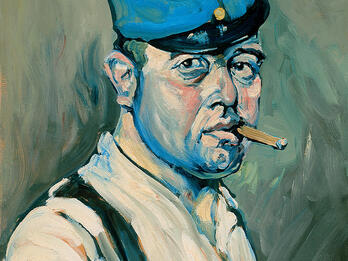
Self-Portrait with Soldier's Hat
Hugo Scheiber painted this rueful self-portrait during World War I. He wears a military cap but otherwise does not appear to be in uniform. Though in 1915 he became a futurist, this painting is more…
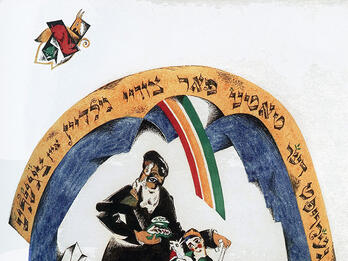
Ḥad Gadya, Gekoyft der tate far tsvey gilden eyn tsigele (Father Bought a Kid for Two Zuzim)
Ḥad Gadya (One Little Goat) is a song customarily sung at the end of the Passover seder. It recounts a sequence of events beginning with a young goat purchased by the protagonist’s father that is then…
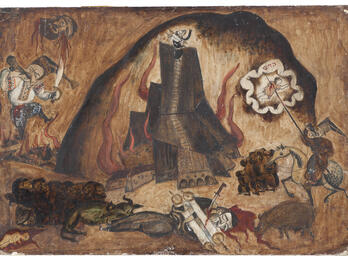
Pogrom
Issachar Ber Ryback painted Pogrom during the Russian Civil War, when waves of pogroms were occurring in Ukraine and other areas in the former Pale of Settlement. In the foreground a slain man…
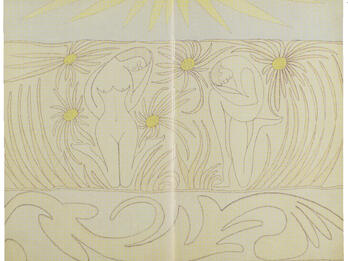
Adam and Eve
David Yakerson’s Adam and Eve dates from a time before his turn to the much more abstract style of suprematism. In this illustration, Adam and Eve blend in with other decorative elements in a…
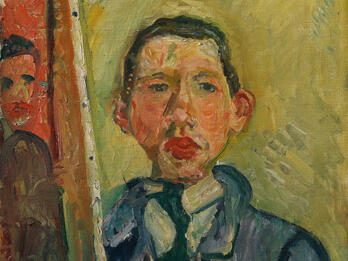
Self-Portrait
Chaim Soutine’s self-portrait is both an homage to art history and a critique of it. There was a long tradition of artists painting themselves facing an easel, holding a palette and paint brushes. But…
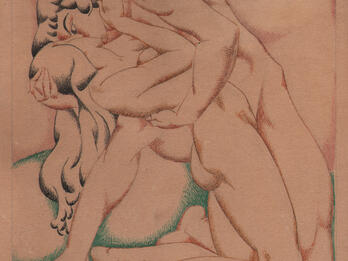
Le Cantique des Cantiques (The Song of Songs)
This erotic illustration by Joseph Chaikov was made for a lavish edition of the biblical Song of Songs published by the Yiddish Kultur-lige in Kiev in 1918–1919. The forms of the embracing couple here…

